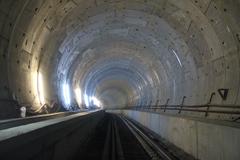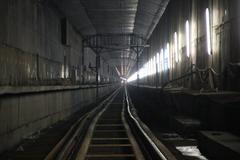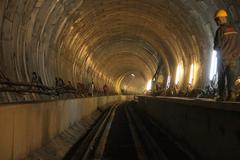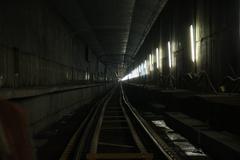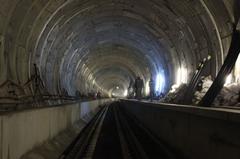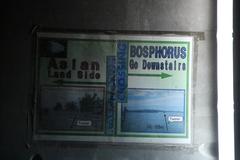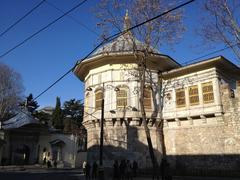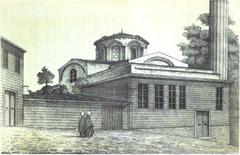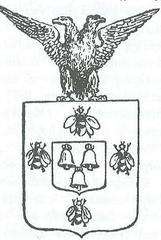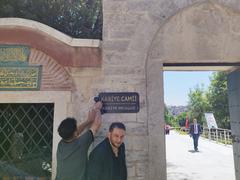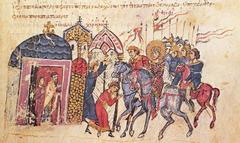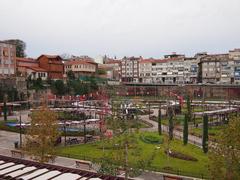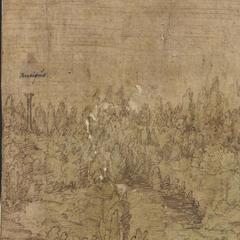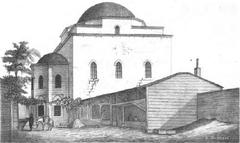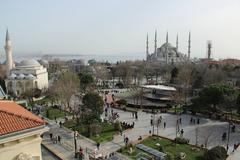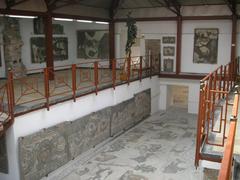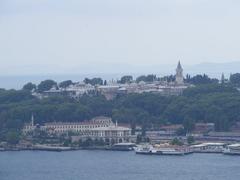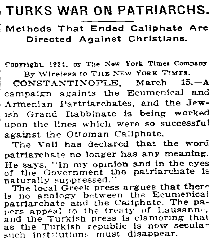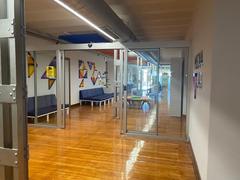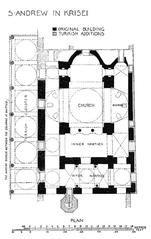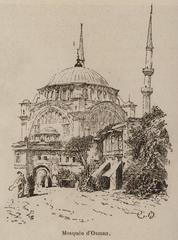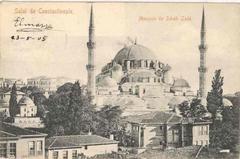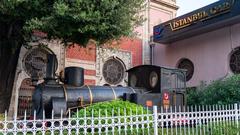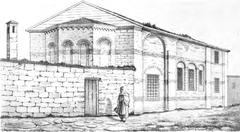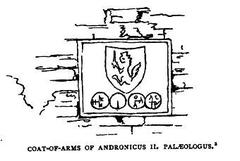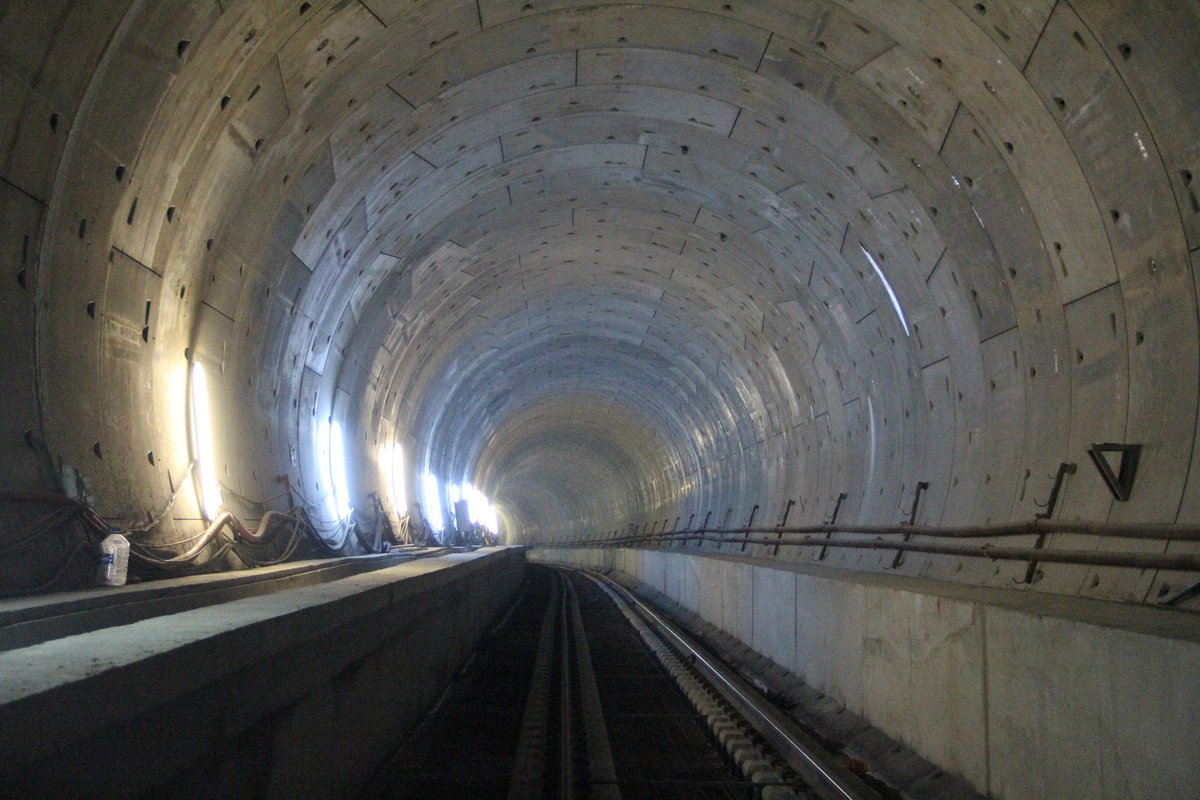
Marmaray Tunnel Visiting Hours, Tickets, and Guide to Historical Sites in Fatih, Turkey
Date: 14/06/2025
Introduction: Marmaray Tunnel and Its Cultural Significance in Fatih, Turkey
The Marmaray Tunnel is a symbol of Istanbul’s seamless blend of modern engineering and ancient history. Opened in 2013, it connects the European and Asian continents beneath the Bosphorus Strait and serves as a crucial artery in Istanbul’s commuter rail network. Stretching approximately 13.5 kilometers underwater, it holds the distinction of being the world’s deepest immersed tube railway tunnel (Marmaray Tunnel in Istanbul: History, Visiting Information, and Travel Tips).
Beyond its function as a transit solution, the Marmaray Tunnel is a window into Istanbul’s past. Its construction led to remarkable archaeological discoveries—Neolithic settlements, Byzantine harbors, churches, and Ottoman-era structures—illuminating 8,500 years of uninterrupted human habitation (Exploring Istanbul’s Marmaray Tunnel Archaeological Discoveries). For travelers, the Marmaray offers more than efficient mobility: it provides direct access to the Fatih district’s world-renowned landmarks, including the Sultanahmet Mosque, Hagia Sophia, Topkapı Palace, and museums that showcase the artifacts unearthed during the tunnel’s construction (Marmaray Tunnel Visiting Hours, Tickets, and Travel Guide for Istanbul Historical Sites).
This guide delivers up-to-date information on:
- Marmaray Tunnel visiting hours and ticketing
- Accessibility and traveler amenities
- Nearby historical attractions and museums
- Practical tips to maximize your visit
Whether you’re traversing continents or delving into Istanbul’s layered history, this article will help you plan a rich and efficient Marmaray experience.
Archaeological Discoveries at the Marmaray Tunnel
Neolithic and Prehistoric Findings
Excavations at the Yenikapı site, part of the Marmaray project, revealed Istanbul’s earliest inhabitants. Archaeologists unearthed 8,500-year-old skeletons, footprints, and tools, offering evidence of sophisticated Neolithic societies. These artifacts are displayed at the Istanbul Archaeological Museum, providing visitors with a rare glimpse into prehistoric Istanbul (Fatih Municipality).
Ancient Harbors and Maritime Heritage
Harbor of Eleutherios (Theodosius)
One of the landmark discoveries is the Harbor of Eleutherios, Constantinople’s main port from the 4th to the 11th centuries CE. The excavation exposed 25 piers and the world’s largest collection of medieval shipwrecks (Daily Sabah).
Prosphorion Harbor and Sirkeci Finds
In Sirkeci, remains of the ancient Prosphorion Harbor, dating back to the 7th century BCE, were uncovered. These sites highlight Istanbul’s long-standing maritime tradition, with layers of artifacts from different eras on display.
Byzantine and Ottoman Period Discoveries
Marmaray tunnel works revealed foundations of Byzantine churches, cemeteries, and urban infrastructure from the 12th and 13th centuries CE. Near Mihrimah Sultan Mosque, visitors can observe the remains of an apsidal church and related burial sites. Ottoman-era finds include cisterns, wells, and residential buildings, tracing the evolution of urban life after the conquest (Fatih Municipality).
Marmaray Tunnel Visitor Information
Visiting Hours and Ticket Prices
- Hours: Daily, 9:00 AM – 6:00 PM (last entry at 5:30 PM)
- Admission: 50 TRY (discounts for students and seniors); tickets available online or on-site
- Accessibility: Wheelchair accessible, with ramps and elevators throughout
Guided Tours and Museum Exhibits
- Guided Tours: Available in multiple languages; advance booking recommended
- Museum Locations: Istanbul Archaeological Museum and open-air displays at Yenikapı Station
Special Events
Seasonal exhibitions and lectures highlighting Marmaray’s archaeological discoveries take place at the Istanbul Archaeological Museum and Yenikapı open museum. Check official websites for current schedules.
Tips for Travelers
- Purchase tickets online to avoid queues
- Allocate 2–3 hours for a thorough visit
- Photography is allowed in open-air and museum areas (not inside the tunnel)
- Wear comfortable footwear
Marmaray Tunnel: Engineering and Route Overview
Historical Context and Project Genesis
The vision for a Bosphorus rail tunnel dates back to 1860, but only became feasible in the 21st century. Construction began in 2004, with the tunnel opening in 2013—transforming Istanbul’s transport landscape.
Scope and Route
- Total length: 76.3 km, connecting Halkalı (Europe) to Gebze (Asia)
- Tunnel section: 1.4 km immersed tube, 55 m below sea level
- Stations: 43 total, with key tourist stops at Sirkeci, Yenikapı, and Üsküdar
Operating Hours and Ticketing
- Trains run: 6:00 AM – midnight (extended to 1:20 AM on Fridays and weekends)
- Tickets: Purchase via Istanbulkart (multi-ride smart card), single-use tickets also available
- Fares: Distance-based, ranging from 17.70 TL to 39.18 TL (single-use: 70 TL; discounts for students/elderly)
Accessibility and Amenities
- Elevators, escalators, and ramps at all major stations
- Accessible toilets (activate with Istanbulkart)
- Bilingual (Turkish/English) signage and announcements
- Full integration with Istanbul’s metro, tram, and ferry networks
Luggage and Safety
- No strict luggage limits, but large bags can be inconvenient during rush hours
- Modern, air-conditioned trains; security is ensured by CCTV and trained staff
- The tunnel is engineered for seismic resilience (up to magnitude 9 earthquakes)
Top Historical Sites Near Marmaray Stations in Fatih
Sirkeci Station
- Sultanahmet (Blue) Mosque: Iconic 17th-century mosque renowned for blue tiles (Art and Then Some)
- Hagia Sophia: UNESCO World Heritage Site, formerly a basilica and mosque
- Topkapı Palace: Ottoman imperial residence and museum
- Spice Bazaar: Vibrant market for spices and sweets
Yenikapı Station
- Byzantine Harbor Museum: Showcasing ancient shipwrecks and artifacts
- Fatih Mosque and Complex: 15th-century mosque and social center (Art and Then Some)
Üsküdar Station
- Maiden’s Tower: Historic lighthouse on the Bosphorus
- Kadıköy Markets: Bustling local markets and eateries
Additional Recommendations
- Basilica Cistern: Byzantine-era underground water reservoir (Istanbul Investments)
- Süleymaniye Mosque: Masterpiece by architect Mimar Sinan
- Kariye Museum (Chora Church): Celebrated for Byzantine mosaics and frescoes
Frequently Asked Questions (FAQ)
Q: What are the Marmaray Tunnel visiting hours?
A: Archaeological sites are open daily 9:00 AM–6:00 PM; the train system runs from 6:00 AM–midnight (till 1:20 AM on Fridays/weekends).
Q: How do I buy tickets?
A: Use Istanbulkart or buy a single-use ticket at any Marmaray station.
Q: Is Marmaray accessible for disabled visitors?
A: Yes, all stations and trains are wheelchair-friendly.
Q: Are there guided tours?
A: Yes, for the archaeological sites and museums; book in advance for language options.
Q: Can I easily reach Istanbul’s main attractions from Marmaray stations?
A: Absolutely—Sirkeci, Yenikapı, and Üsküdar stations are within walking distance of major sites.
Marmaray Tunnel Quick Facts: Technical and Visitor Information
| Feature | Specification/Detail |
|---|---|
| Total route length | 76.3 km |
| Immersed tube tunnel length | 1.4 km |
| Maximum tunnel depth | 55 m below sea level |
| Number of stations | 43 |
| Train speed | Up to 105 km/h |
| Passenger capacity | 75,000/hour/direction (2025 projection) |
| Daily ridership (2019) | 136,000 |
| Project cost | $4–4.5 billion |
| Seismic resistance | Up to magnitude 9 earthquake |
| Accessibility | Full (elevators, ramps, accessible toilets) |
| Ticket types | Istanbulkart, single-use tickets |
| Languages | Turkish and English signage/announcements |
Plan Your Visit: Key Tips
- Avoid peak hours (7:00–9:00 AM, 5:00–8:00 PM) for a more comfortable journey
- Use Istanbulkart for convenience and fare discounts
- Check station maps for seamless transfers to metro, tram, or ferry lines
- Explore open-air museums and displays at Yenikapı
- Stay updated via the official Marmaray website and the Audiala app
Summary
The Marmaray Tunnel is a marvel of both engineering and cultural heritage, serving as a bridge between continents, eras, and people. Its extended operating hours, accessible facilities, and proximity to Istanbul’s most treasured sites make it an essential experience for any visitor. By combining efficient urban mobility with opportunities to explore archaeological and historical wonders, Marmaray stands as a unique gateway to the heart of Istanbul.
Start planning your journey today—immerse yourself in the living history and vibrant present of this extraordinary city.
Further Reading and Reliable Sources
- Exploring Istanbul’s Marmaray Tunnel Archaeological Discoveries: Visiting Hours, Tickets, and Historical Insights, 2025, Fatih Municipality
- Marmaray Tunnel in Istanbul: History, Visiting Information, and Travel Tips, 2025, Daily Sabah
- Marmaray Tunnel Visiting Hours, Tickets, and Travel Guide for Istanbul Historical Sites, 2025, Istanbul Tips
- Marmaray Istanbul: Visiting Hours, Tickets, Schedule, and Nearby Historical Attractions, 2025, POCACITO EU
